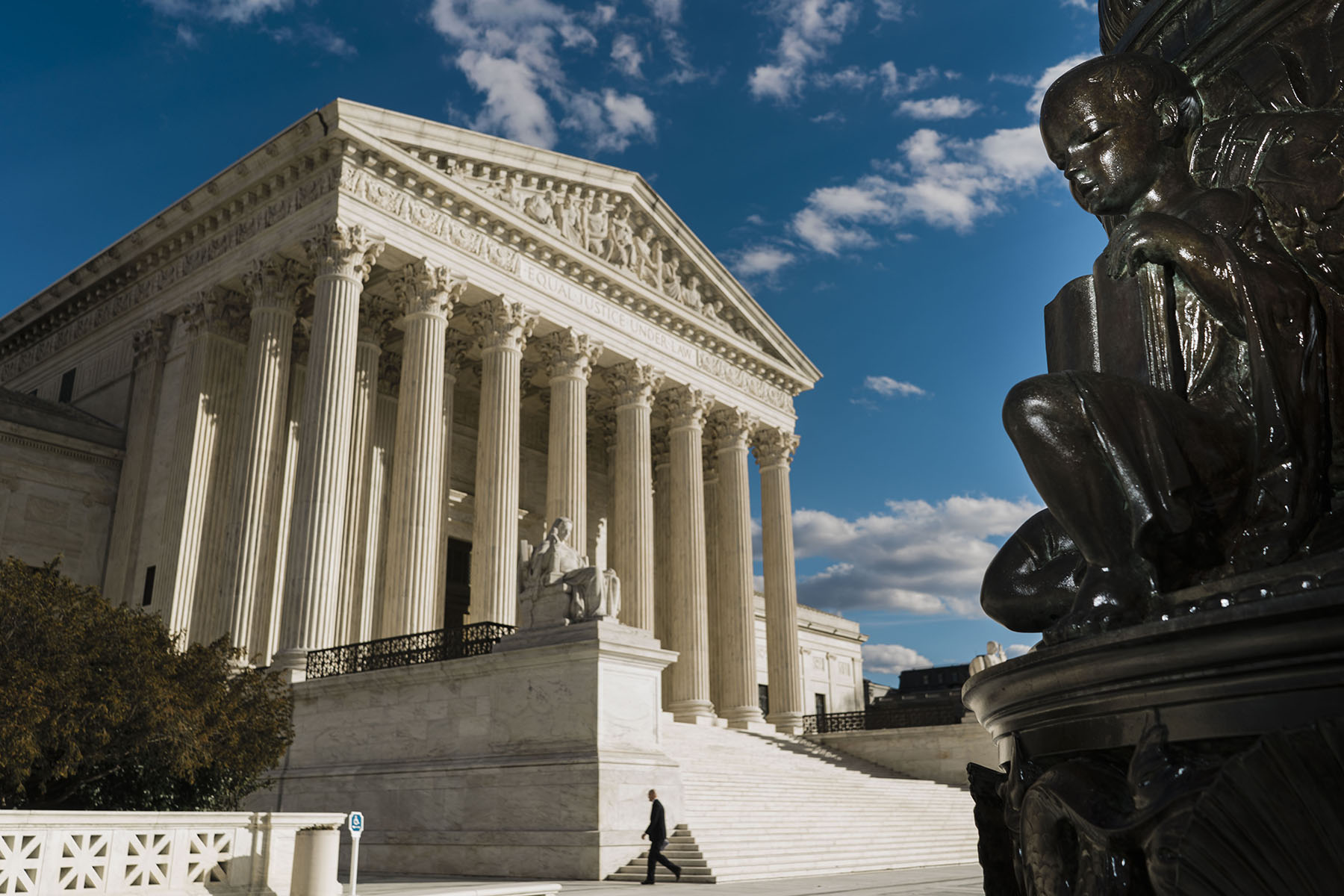Your trusted source for contextualizing education and politics news. Sign up for our daily newsletter.
Colleges and universities may no longer factor race into admissions after the Supreme Court ruled 6-3 to end affirmative action in a consolidated decision handed down Thursday. The end of race-conscious college admissions will have a particularly outsized impact on women of color.
The decision in two cases — Students for Fair Admissions Inc. v. University of North Carolina and Students for Fair Admissions Inc. v. President & Fellows of Harvard College — reverses 45 years of legal precedent. In 1978’s Regents of the University of California v. Bakke, the court determined that affirmative action was lawful, a ruling that it upheld multiple times, including in the 2003 case Grutter v. Bollinger and in the 2013 and 2016 cases Fisher v. University of Texas. In these decisions, White women claimed they were denied higher education admission because of their race.
Women generally outnumber men in higher education institutions — reaching a record 60 percent of enrollees in 2021.
Women of color particularly outnumber men of color in colleges and universities, with Black women earning 64 percent of bachelor’s degrees, 72 percent of master’s degrees and 66 percent of doctoral, medical and dental degrees for Black students overall, according to the American Association of University Women. Latinas are also more likely to earn bachelor’s degrees than Latinos; about 27 percent of Latinas are college educated compared to about 21 percent of Latinos.
The pair of affirmative action cases the court heard were both brought by Students for Fair Admissions. Started by right-wing activist Edward Blum, the group contends that using race as a factor in admissions policies violates the 14th Amendment’s equal protection clause because it purportedly disadvantages White and Asian-American students. The majority agreed with his assertion.
Chief Justice John Roberts wrote the majority opinion for the six conservative justices, with justices Sonia Sotomayor, Elena Kagan and Ketanji Brown Jackson dissenting. Jackson recused herself from the Harvard case because she served on the school’s Board of Overseers, one of its top governing bodies, but did pen a dissent, as did Sotomayor.
“With let-them-eat-cake obliviousness, today, the majority pulls the ripcord and announces ‘colorblindness for all’ by legal fiat,” Jackson wrote. “Today’s ruling makes things worse, not better. The best that can be said of the majority’s perspective is that it proceeds (ostrich-like) from the hope that preventing consideration of race will end racism. But if that is its motivation, the majority proceeds in vain.”
In her dissent, Sotomayor noted that the decision “rolls back decades of precedent and momentous progress. It holds that race can no longer be used in a limited way in college admissions to achieve such critical benefits,” and that “the Court cements a superficial rule of colorblindness as a constitutional principle in an endemically segregated society.”
At a news conference Thursday, President Joe Biden laid out plans to help schools continue their diversity efforts while complying with the court’s decision.
“Today, I’m directing the Department of Education to analyze what practices help build more inclusive and diverse student bodies and what practices hold that back; practices like legacy admissions and other systems expand privilege instead of opportunity. Colleges and universities should continue their commitment to support, retain and graduate diverse students and classes.”
One way colleges can work toward diversity during the admissions process, Biden suggested, is by considering the adversity qualified students have overcome. He emphasized that these students should still meet GPA and test score benchmarks.
“Once that test is met, then adversity should be considered, including students’ lack of financial means because we know too few students of low-income families, whether in big cities or rural communities, are getting an opportunity to go to college.”
Admissions officials should consider whether students have demonstrated more “grit and determination” to go to college because they’ve endured more hardships, including racial discrimination, Biden said. The president noted that the Supreme Court majority said that “nothing in this opinion should be construed as prohibiting universities from considering an applicant’s discussion of how race affected his or her life, be it through discrimination or inspiration or otherwise.”
In the past, Sotomayor has pointed out that colleges and universities give preferences to prospective legacy students, or the children of alumni, and athletes without the academic credentials typically needed to grant them admission. The 2019 college admissions scandal highlighted how children from affluent families use both legal and illegal means to get accepted into higher education institutions. As men’s numbers in higher education dwindle, some experts have even said that male students now get preferential treatment in admissions.
A May poll of 1,680 American adults by the Associated Press-NORC Center for Public Affairs Research found that 63 percent believe that the Supreme Court should not prohibit colleges and universities from considering race during admissions. That said, 62 percent of those polled believe that grades are extremely important in the admissions process and 47 percent believe that standardized test scores are. Thirty-four percent said that a student’s ability to afford tuition was the most important factor, while 13 percent said that race was. Only 9 percent identified gender as an extremely important admissions factor. The poll was conducted May 5-11 online, by landline and cell phone and has a margin of sampling error of +/- 3.4 percentage points.
Affirmative action supporters have long argued that doing away with the practice will harm qualified students of color who have been racially and economically disadvantaged for generations. After California banned affirmative action in 1996, enrollment of Latinx students in the state’s most selective university system dropped precipitously. Today, the racial demographics of students enrolled at its second-tier higher education system, California State University, nearly mirror the proportions of graduating seniors in the state, but the University of California system has yet to regain the percentages of Latinx and Black students it had before the affirmative action ban. Eight more states have since ended affirmative action: Washington, Florida, Michigan, Nebraska, Arizona, New Hampshire, Oklahoma and Idaho. Washington, however, repealed its ban last year.
Proponents of affirmative action argue that ending the policy nationally could have dire consequences, even hurting diversity efforts in workplaces. Moreover, if fewer students of color are accepted into medical schools, they say, it could have detrimental effects on patients of color amid long-running claims and research about racial biases in health care, including high rates of maternal mortality among Black people. A 2022 research study revealed that public medical schools in states that banned affirmative action experienced a 4.8 percentage drop in the enrollment of students of color.
Now that race can no longer be used in admissions criteria, higher education institutions may still use income or class rankings when taking into account a student’s background. States such as California and Texas guarantee admission at some of their best public universities to students who graduate among the top 9 and top 10 percent of their classes, respectively. Some research indicates Texas’ policy did little to diversify the students at its top universities.
The Supreme Court’s decision to end affirmative action comes as college enrollment has dropped steadily since 2019. The student debt crisis, which disproportionately affects women of color, is one issue that’s been linked to this downward enrollment trend. In August, Biden forgave up to $20,000 in loan debt for qualifying students, but lawsuits following the decision blocked the federal government from providing this relief while it is being decided by the courts. The Supreme Court is expected to rule soon in two related cases about Biden’s debt forgiveness plan: Biden v. Nebraska and Department of Education v. Brown.
Later Thursday, Harvard issued a statement from its leadership team that vowed to “comply with the Court’s decision” while maintaining the school’s commitment to diversity.
“We write today to reaffirm the fundamental principle that deep and transformative teaching, learning, and research depend upon a community comprising people of many backgrounds, perspectives, and lived experiences,” the statement reads. “In the weeks and months ahead, drawing on the talent and expertise of our Harvard community, we will determine how to preserve, consistent with the Court’s new precedent, our essential values.”
The effort to block affirmative action coincides with a movement to end diversity, equity and inclusion endeavors in higher education. Kimberlé Crenshaw, a professor at the UCLA School of Law and Columbia Law School, told The 19th in May that the trend suggests that some individuals have a distorted view of equity.
“People have no idea how far a decision that claims that equity and inclusion is discriminatory will go to underscore demands that we stop talking about racism, we stop talking about sexism, we stop talking about homophobia and transphobia,” said Crenshaw, whose work this year was cut from the College Board’s new Advanced Placement African American Studies course.
“The idea that integration and inclusion is discriminatory against White people is the oldest idea in the book. Even at the end of Reconstruction, basically giving the freedmen rights was vetoed by the president at the time who said, ‘This is discrimination against White people,’” she said. “As late as the civil rights movement, they said forcing [White] people to serve Black people discriminates against them.”








